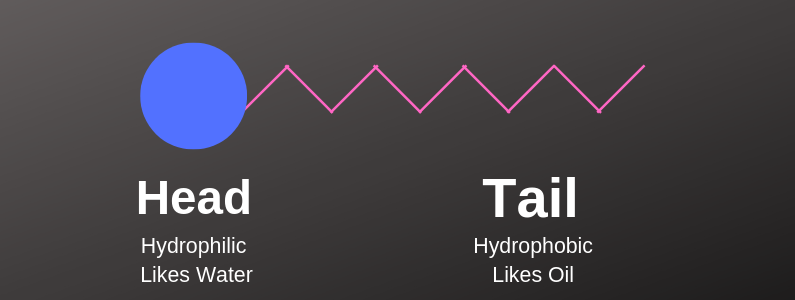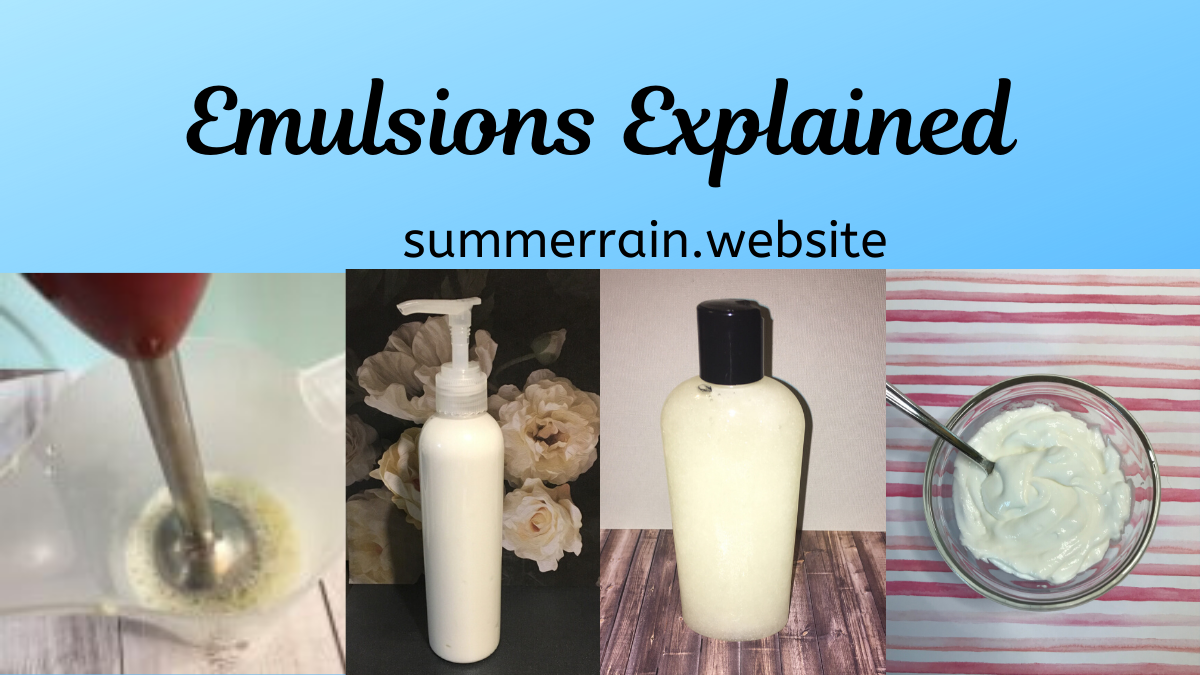We all know that oil and water don’t mix, because they are immiscible. So, how do we get immiscible ingredients to stay together? Emulsions! This is where our emulsifier comes in. Without an emulsifier, no matter how much you stirred the oils and water, once you stopped it would separate.
Table of Contents
Like attracts Like, that’s why we need emulsions
Substances like to hangout with like substances. It’s the old saying like attracts like. Water, always wants to hangout with water. Put just water in a spray bottle and spray the window, it will try its best to group back together with other water droplets.
Water is polar. So it not only wants to hangout with water, it also wants to hangout with other polar ingredients. Such as glycerin or propylene glycol.
On the other hand we have oil, which is non-polar. Non-polar means having no charge. Oil wants to hangout with other non-polar ingredients and will easily mix with other oils and butters.
How does an emulsifier work?
The reason that an emulsifier works is, they have one part that loves water and the other part loves oil. They basically grab a water and an oil molecule and hold them together.

We have the lipophilic end (attracted to water) and the hydrophilic end (attracted to oil).
Two Main Types of Emulsions
Water in Oil (w/o)
- Oil surrounds the water molecules
- When put on your skin, the oil would touch skin first
- Normally, used in thicker formulas. Such as: sunscreen and night time creams.
Oil in Water (o/w)
- Water surrounds the oil molecules
- When put on your skin, the water would touch skin first
- Commonly used in thinner formulas. Such as: lotions and day creams
Stability
When we talk about the stability of an emulsion, we are referring to its ability to not change over time.
Ok, so even though we use an emulsifier, all emulsions will separate with enough time. The goal is to keep our ingredients together for as long as possible.
Why does the emulsion turn opaque?
One of the first things that you will notice when making a product that requires an emulsifier is that right away it turns opaque. It changes color because the micelles are forming and light can’t easily pass through them. The more you mix and and the more micelles that are formed, the harder it is to see through.
